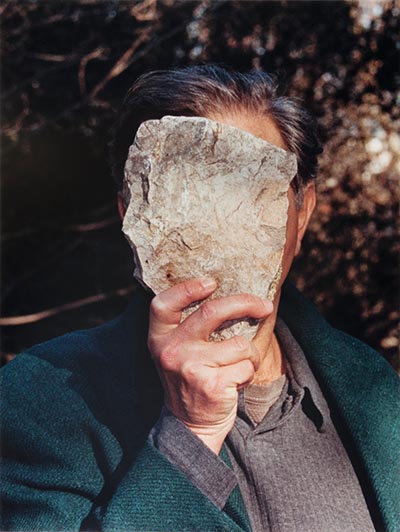NEW YORK, September 20, 2017—The Whitney Museum of American Art will host the first North American retrospective of artist, performer, poet, essayist, and activist Jimmie Durham (b. 1940), one of the most compelling and multifaceted figures working internationally today. On view from November 3, 2017, to January 28, 2018, Jimmie Durham: At the Center of the World features approximately 120 works from 1970 to the present, including sculpture, drawing, collage, printmaking, photography, and video.
Durham has, over the past nearly five decades, produced wryly political art, often raising questions about authenticity and making visible the ongoing repercussions of colonialism, both within the U.S. and globally. Frequently working with a combination of natural and found materials, he approaches his subjects with a poetic wit and a potent blend of irony and insight.
“The Whitney is delighted to present the work of Jimmie Durham, who has made a singular contribution to contemporary art since the 1970s,” said Adam D. Weinberg, the Whitney’s Alice Pratt Brown Director. “This retrospective provides an opportunity for audiences to gain a deeper understanding of Durham’s expansive practice, or perhaps to discover him for the first time. We are grateful to the Hammer Museum, in particular to director Ann Philbin and curator Anne Ellegood, for organizing this long-overdue retrospective.”
Whitney curator Elisabeth Sussman, who is installing the exhibition at the Whitney together with assistant curator Laura Phipps, noted, “Although Jimmie Durham has lived as an expatriate for decades, his work has remained connected to crucial developments in American art, such as found-object assemblage, appropriation of text and image, institutional critique, performance art, and the politics of representation. This is Durham’s first substantial solo show in the United States in twenty-two years and it’s a rare chance to celebrate his extraordinary accomplishments as an artist and to revel in his wit, his fascination with language, and his remarkable use of materials.”
After studying art in Geneva at the École des Beaux-Arts from 1969 to 1973, Durham returned to the U.S. to become a full-time activist for the American Indian Movement, an advocacy group founded in 1968 to address issues facing Native Americans. Durham’s activist work influenced him in the years that followed his return to art, and he has frequently explored the ways in which Eurocentric biases impact representations of Indigenous peoples. Durham became part of the vibrant New York City downtown art scene in the 1980s. He moved to Cuernavaca, Mexico, in 1987 and then to Europe, where he has lived in a number of different cities since 1994, currently splitting his time between Berlin and Naples. Durham has rarely exhibited in the United States over the past twenty years. Since his participation in Documenta IX (1992), however, his work has been widely shown and critically embraced in Europe. Since leaving the U.S., Durham has immersed himself in the culture and history of each adopted home, drawing on the local language, materials, and architecture to reframe his larger political, historical, and philosophical questions. Throughout his travels, he has dryly declared wherever he happens to be—from Mexico City to Berlin to Naples—the “center of the world.”
This exhibition, as it has traveled from its previous venues at the Hammer Museum in Los Angeles and the Walker Art Center in Minneapolis, has revived debates, dating back to the early 1990s, over the artist’s claims of Cherokee ancestry. Durham is not recognized as a citizen by any of the Cherokee tribes, which as sovereign nations determine their own membership. Recent discussions of this point have prompted a wider audience to confront important questions regarding tribal sovereignty, and what it means—or does not mean—for an artist to self-identify as being Native American. This exhibition does not attempt to resolve these questions. Rather it contends that Durham’s work—with its singular and vital critique of Western systems of knowledge and power—offers a crucial perspective on the history of American art and life.
Jimmie Durham: At the Center of the World was organized by the Hammer Museum, Los Angeles, and curated by Anne Ellegood, senior curator, with MacKenzie Stevens, curatorial assistant. It travelled to the Walker Art Center prior to coming to the Whitney, where its installation is being overseen by Elisabeth Sussman, curator and Sondra Gilman Curator of Photography, and assistant curator Laura Phipps. Following the Whitney, the exhibition will travel to the Remai Modern in Saskatoon.
| 
